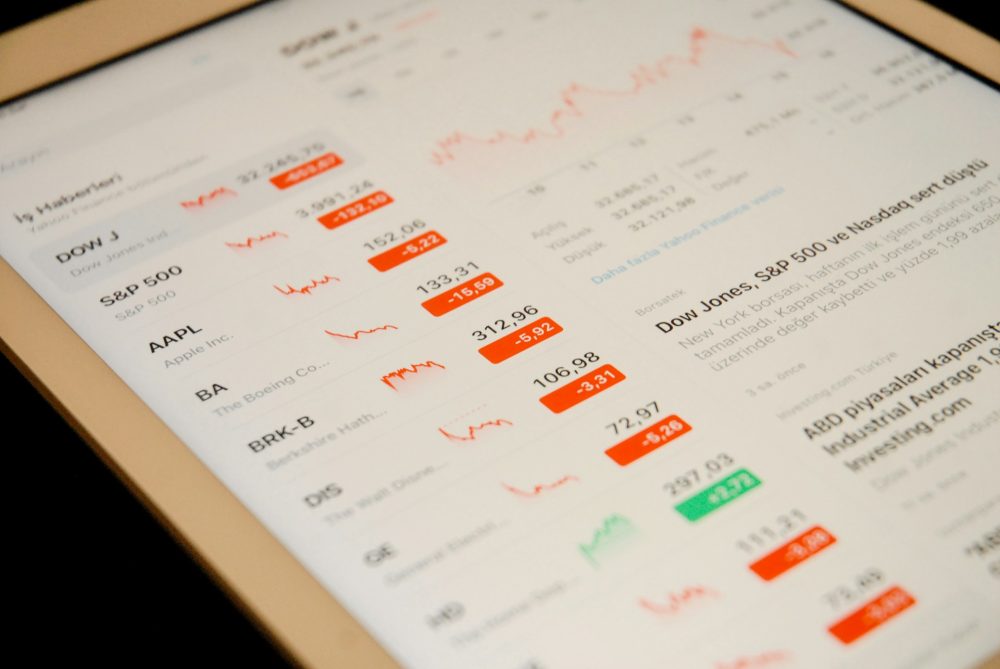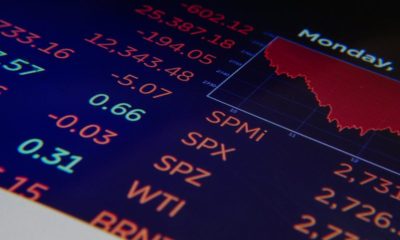Featured
The 2021 Economic Review: An Unprecedented Encore
If the buzzword for 2020 was “unprecedented”, it may have been “inflation” in 2021. The year 2021 amplified what the coronavirus pandemic provoked in 2020– extreme government spending. Whether 2021 was an action or reaction, it introduced the dangerous double-edged sword of combating inflation with the same dollars that might cause it.

The year 2020 was the year in which “unprecedented” was thrown around more than Tom Brady’s favorite football. It might seem like the years are blurring together since Covid entered the picture, so to distinguish one from the other, here is what was so unprecedented about two years ago:
- A record-high stock market entered Bear territory in March of 2020 as the Dow plummeted 37% in just over a month.
- The U.S. unemployment rate hit 14.7% in April 2020, the highest since the Great Depression.
- The Fed cut the federal funds rate to 0% and expanded its repo operations (Quantitative Easing) by $2 trillion within one week.
- President Trump signed the $2.3 trillion CARES Act into law on March 27, 2020, which introduced stimulus, enhanced unemployment, and student loan forbearance.
- The stock market rebounded as tech soared and the Dow finished up 7.2% on the year.
The year 2021 was certainly not to be outdone. Exactly two weeks after the Capitol was overrun, President Joe Biden was sworn into office on January 20, 2021, as the oldest president in U.S. history. He set out to rewrite much of Trump’s history book, except for the stimulus part. Biden quickly passed the $1.9 trillion American Rescue Package in March which included $1,400 stimulus checks, enhanced unemployment by $300 week on top of the normal $400 benefit, and implemented a monthly child tax credit of $300 per child under age six and $250 per month for each child age six to seventeen. He then added the $1.2 trillion Bipartisan Infrastructure Law in November. The White House wrapped up the year by giving all young professionals an early Christmas gift– announcing on December 22 it would extend its federal student loan relief until at least May 1, 2022.
In respect to the markets, the Dow finished the year up 18.9%, lagging the Nasdaq at 23%, and S&P 500 at 29%. This was the first time since 2016 that the S&P outperformed the Nasdaq, and it was the largest spread since 2002. Home prices increased 19.1% in October, year over year. The combined market value of the twenty-one energy stocks in the S&P finished the year worth nearly $1 trillion, which makes the entire sector’s value barely more than the 2021 increase in Apple’s market cap. The technology company is the world’s most valuable company, now worth $3 trillion. Oil finished the year up 54.46%.
If the buzzword for 2020 was “unprecedented”, it may have been “inflation” in 2021. Led by rising costs in food and energy, consumer prices climbed 6.8% in November from a year earlier, the fastest pace of increase since 1982. In November, the talk of inflation being transitory or not and a backdrop of strong unemployment and stock market figures led Fed Chairman, Jerome Powell, to hint at lowering interest rates in 2022 and slowing the Fed’s buying of bonds. However, the subsequent spread of the Omicron variant quickly dampened the conversation.
To compare the American economy to that of before Covid, it is worth noting the government’s budget. The Federal Budget in 2019 was $4.4 trillion, which caused a $984 billion deficit (4.6% of GDP). The 2020 Federal Budget was a record $6.6 trillion, with a $3.1 trillion deficit (14.9% of GDP). The 2021 Federal Budget eclipsed the prior year with $6.8 trillion of spending, leading to a $2.8 trillion deficit (12.4% of GDP). 2020 and 2021 are the two largest budget deficits, as a percentage of GDP, since 1945. The average deficit, since 1971, has been -3.30%.
It is often said by economists that inflation is the cruelest tax of all, implying that it does not hurt rich people, it hurts poor people. The rationale behind this interpretation is that rich people are both owners and users. So, as the price of goods and services increase, the rich people who own such stocks, services, and assets are increasing their net worth and income in sync with what they use. Conversely, the poor may only be seen as users, subject to buying all the same goods and services at higher prices, while their lack of investments and ownership leaves net worth and incomes stagnant. The year 2021 amplified what Coronavirus provoked in 2020– extreme government spending. Whether 2021 was an action or reaction, it introduced the dangerous double-edged sword of combatting inflation with the same dollars that might cause it.
__
(Featured Image by QuinceCreative via Pixabay)
DISCLAIMER: This article was written by a third party contributor and does not reflect the opinion of Born2Invest, its management, staff or its associates. Please review our disclaimer for more information.
This article may include forward-looking statements. These forward-looking statements generally are identified by the words “believe,” “project,” “estimate,” “become,” “plan,” “will,” and similar expressions. These forward-looking statements involve known and unknown risks as well as uncertainties, including those discussed in the following cautionary statements and elsewhere in this article and on this site. Although the Company may believe that its expectations are based on reasonable assumptions, the actual results that the Company may achieve may differ materially from any forward-looking statements, which reflect the opinions of the management of the Company only as of the date hereof. Additionally, please make sure to read these important disclosures.

-

 Markets2 weeks ago
Markets2 weeks agoNavigating the Fourth Turning: Cycles of Crisis and Opportunity
-

 Cannabis4 days ago
Cannabis4 days agoIs Aurora Cannabis Stock a Risk Worth Taking?
-

 Impact Investing2 weeks ago
Impact Investing2 weeks agoEU Eases CO2 Tax Burden on SMEs with Revised CBAM Rules
-

 Business6 days ago
Business6 days agoAmerica’s Debt Spiral: A $67 Trillion Reckoning Looms by 2035

























